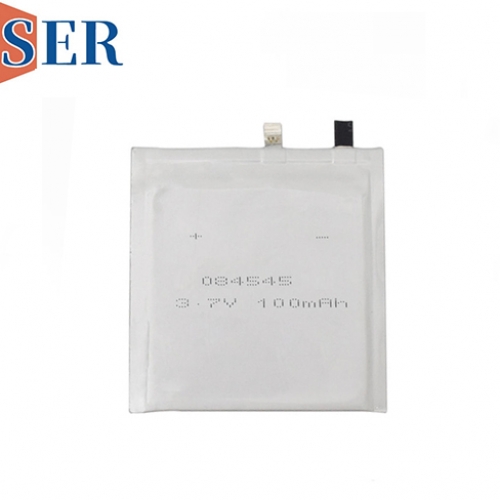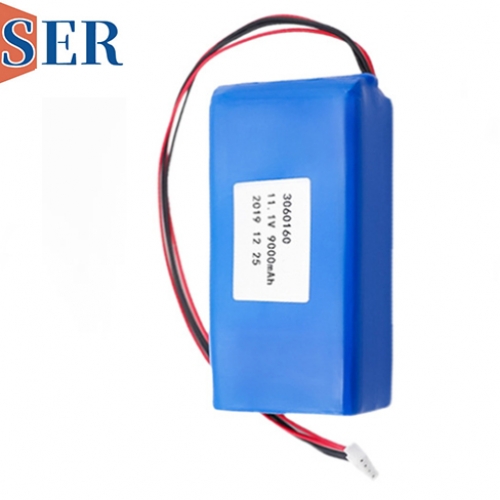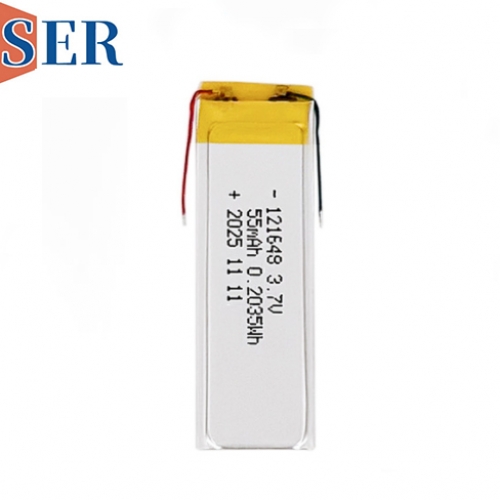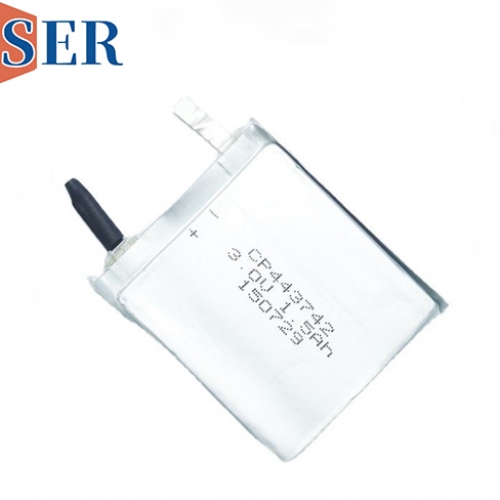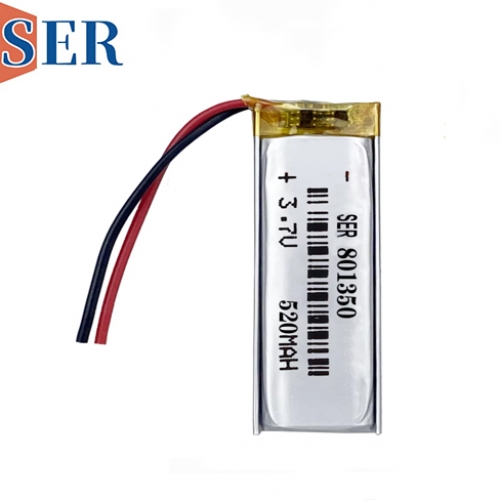Customized Ultra-Thin Pouch Battery CP224147 for IoT, Automatic Smoke Detectors
Customized Ultra-Thin Pouch Battery CP224147 for IoT, Automatic Smoke Detectors

In the era of miniaturization and smart technology, electronic devices—from compact IoT sensors to life-saving automatic smoke detectors—demand power sources that balance three critical needs: space efficiency, long-lasting performance, and reliable stability. Traditional batteries often fall short: bulky cylindrical cells waste precious enclosure space, low-capacity options require frequent replacements, and unstable chemistries risk device failure. Enter the Customized Ultra-Thin Pouch Battery CP224147—a non-rechargeable primary battery engineered to address these pain points. With its 3.0V voltage, 800mAh capacity, prismatic LiMnO₂ (lithium manganese dioxide) chemistry, and ultra-thin, lightweight soft pack design, the CP224147 redefines what a compact battery can do. This article explores every dimension of this innovative power cell: its core specifications, chemical composition, design breakthroughs, customization capabilities, and real-world applications in IoT and automatic smoke detectors. By the end, you’ll understand why the CP224147 is becoming the go-to choice for engineers and manufacturers prioritizing performance without compromising on size.
1. Unpacking the ultra thin battery CP224147: Core Specifications That Define Its Role
Before diving into technical details, it’s essential to establish the CP224147’s fundamental identity—what it is, how it’s categorized, and the key parameters that make it suitable for IoT and automatic smoke detectors. At its heart, the CP224147 is a non-rechargeable (primary) prismatic pouch battery, built to deliver consistent power for low-to-moderate drain devices over extended periods. Its model number, “CP224147,” is a critical clue to its physical form: the digits correspond to its dimensions, measuring approximately 2.2mm in thickness, 41mm in width, and 47mm in length (abbreviated as 2.24147mm). This ultra-thin profile is a defining feature, setting it apart from standard batteries that often exceed 5mm in thickness.
To fully grasp its capabilities, let’s break down its core specifications:
1.1 Voltage: Stable 3.0V for Uninterrupted Device Operation
The CP224147 delivers a nominal voltage of 3.0V—a sweet spot for most low-power electronic devices, including IoT sensors and automatic smoke detectors. Unlike alkaline batteries (which typically start at 1.5V and require series connection to reach 3.0V) or some lithium chemistries (which may have erratic voltage drops), the CP224147 maintains a near-constant 3.0V output for 80-90% of its discharge cycle. This stability is non-negotiable for devices like automatic smoke detectors: a sudden voltage dip could disable the detector’s sensor or alarm, putting lives at risk. For IoT devices (e.g., smart thermostats, asset trackers), consistent voltage ensures data transmission remains reliable and avoids false readings caused by power fluctuations.
1.2 Capacity: 800mAh—“Big Capacity” in a Tiny Form
Capacity, measured in milliampere-hours (mAh), quantifies how much energy a battery can store and deliver. The CP224147’s 800mAh rating is a standout feature for its size: it can supply 800 milliamps (mA) of current for 1 hour, 400mA for 2 hours, or a smaller current (e.g., 10mA) for 80 hours—depending on the device’s power demands. For context:
This “big capacity” in an ultra-thin form makes the CP224147 ideal for devices where replacing batteries is costly, time-consuming, or dangerous (e.g., smoke detectors in high ceilings, IoT sensors in industrial machinery).
1.3 Chemistry: LiMnO₂—The Backbone of Reliability and Safety
The CP224147 relies on lithium manganese dioxide (LiMnO₂) chemistry—a primary LiMNO2 battery technology chosen for its unbeatable combination of safety, stability, and temperature tolerance. Unlike lithium-thionyl chloride (Li-SOCl₂) batteries (which can be volatile in high temperatures) or alkaline batteries (which leak easily), LiMnO₂ chemistry is engineered for low-risk, long-term performance. We’ll explore this chemistry in depth in Section 2, but for now, it’s critical to note: LiMnO₂ is the reason the CP224147 can operate in harsh environments (from -20°C to +60°C) and maintain a shelf life of 5-10 years—key requirements for devices that may sit in storage or harsh conditions before use.
1.4 Form Factor: Ultra-Thin Prismatic Pouch—Designed for Compact Devices
The CP224147’s “ultra-thin” (2.2mm) and “prismatic pouch” design is a response to the growing demand for batteries that fit into slim, space-constrained devices. Traditional cylindrical batteries (e.g., AA, CR2032) leave gaps in rectangular enclosures, forcing manufacturers to increase device size to accommodate them. The CP224147’s prismatic (rectangular) shape fills these gaps perfectly, while its soft pouch casing (made of flexible polymer film) reduces thickness and weight. At just 5-7 grams (depending on customization), it’s significantly lighter than hard-case batteries of similar capacity—making it ideal for portable IoT devices (e.g., wearable sensors) where weight affects user comfort or device portability.
2. The Science of LiMnO₂ Chemistry: Why It Powers the CP224147
To understand the CP224147’s performance, we must first unpack the LiMnO₂ chemistry that drives it. Primary batteries generate electricity through irreversible chemical reactions, and the choice of electrode materials and electrolytes directly impacts voltage, capacity, safety, and lifespan. LiMnO₂ chemistry is not a random selection—it’s a deliberate choice tailored to the needs of IoT and smoke detector applications. Let’s break down its components, reaction mechanism, and key advantages.
2.1 Key Components of the CP224147’s LiMnO₂ Cell
Like all lithium-based primary batteries, the CP224147 consists of three core components: an anode (negative electrode), a cathode (positive electrode), and an electrolyte. Each plays a critical role in energy generation:
2.1.1 Anode: Metallic Lithium for High Energy Density
The anode of the CP224147 is made of metallic lithium (Li)—a material chosen for its exceptional energy density (3860 mAh/g) and low electrode potential (-3.04V vs. the standard hydrogen electrode). In simple terms, lithium can store more energy per gram than any other common battery anode material (e.g., zinc in alkaline batteries). This high energy density is why the CP224147 can deliver 800mAh of capacity while remaining ultra-thin and lightweight.
2.1.2 Cathode: Manganese Dioxide for Stability and Affordability
The cathode is composed of manganese dioxide (MnO₂)—a stable, abundant, and low-cost material. Specifically, the CP224147 uses β-MnO₂ (a crystalline form of manganese dioxide) because its structure allows for efficient insertion of lithium ions (Li⁺) during discharge. MnO₂ is non-toxic and chemically inert, reducing the risk of leakage or thermal runaway—critical for devices like smoke detectors that are installed in homes and commercial buildings.
2.1.3 Electrolyte: Non-Aqueous Solution for Safe Ion Flow
The electrolyte in the CP224147 is a non-aqueous liquid (water-free) containing a lithium salt (e.g., LiClO₄, LiBF₄) dissolved in organic solvents (e.g., ethylene carbonate, propylene carbonate). Water is excluded because metallic lithium reacts violently with it, which would cause the battery to leak or explode. The electrolyte’s role is to conduct Li⁺ ions from the anode to the cathode during discharge, while preventing the flow of electrons (which travel through the external circuit to power the device).
2.2 How the CP224147 Generates Electricity: The Discharge Reaction
When the CP224147 is connected to a device (e.g., a smoke detector), a spontaneous chemical reaction occurs, converting stored chemical energy into electrical energy. This reaction is irreversible—once complete, the battery can no longer generate power (hence its classification as a primary battery). The process can be summarized as follows:
2.3 Why LiMnO₂ Is Perfect for IoT and Smoke Detectors
LiMnO₂ chemistry offers four key advantages that make it ideal for the CP224147’s target applications:
2.3.1 Wide Temperature Tolerance
The CP224147 operates reliably across a temperature range of -20°C to +60°C (some customized versions can handle -40°C to +85°C). This is critical for IoT devices installed outdoors (e.g., weather sensors, smart streetlights) or in industrial settings (e.g., factory machinery sensors), where temperatures fluctuate drastically. For smoke detectors, temperature tolerance ensures the battery works in unheated attics or hot kitchens—environments where other batteries might fail.
2.3.2 Long Shelf Life
LiMnO₂ batteries have an impressive shelf life of 5-10 years when stored in cool, dry conditions (20-25°C, 40-60% humidity). This is a game-changer for manufacturers: they can stockpile CP224147 batteries for device assembly without worrying about capacity loss. For end-users, it means a smoke detector battery bought today will still work reliably if installed in a new home two years later.
2.3.3 Safety
LiMnO₂ chemistry is inherently safe. Unlike Li-SOCl₂ batteries (which can release toxic gases if damaged) or lithium-ion secondary batteries (which risk thermal runaway), LiMnO₂ cells are resistant to leakage, short circuits, and over-discharge. The CP224147’s soft pouch casing adds an extra layer of protection: it is puncture-resistant and will not burst if exposed to moderate pressure. This safety profile is non-negotiable for smoke detectors—devices that are in close proximity to people and flammable materials.
2.3.4 Low Self-Discharge
Self-discharge is the rate at which a battery loses capacity when not in use. The CP224147 has a self-discharge rate of less than 1% per year—far lower than alkaline batteries (which lose 5-10% per year) or even some other lithium chemistries. For IoT devices that spend months in standby mode (e.g., asset trackers that only transmit data once a day), low self-discharge ensures the battery retains most of its capacity when needed.
3. Design Breakthroughs: Ultra-Thin Pouch and Prismatic Shape
While LiMnO₂ chemistry provides the CP224147’s performance, its physical design is what makes it usable in modern devices. The “ultra-thin pouch” and “prismatic” features are not just aesthetic—they are engineered to solve the space and weight challenges of compact electronics. Let’s explore how these design choices enhance the battery’s functionality.
3.1 Ultra-Thin Pouch Casing: Flexibility and Space Savings
The CP224147’s “soft pack” (pouch) casing is made of a multi-layer polymer film (typically polyethylene, polypropylene, and a thin aluminum foil barrier). This differs from hard-case batteries (which use steel or aluminum shells) and offers three key benefits:
3.1.1 Minimal Thickness
Hard-case batteries require a rigid shell to protect internal components, which adds 1-2mm to their thickness. The CP224147’s flexible polymer casing eliminates this extra bulk, allowing it to reach a thickness of just 2.2mm. This is a game-changer for slim devices like:
3.1.2 Light Weight
Polymer film is significantly lighter than metal: the CP224147 weighs just 5-7 grams, compared to 10-12 grams for a hard-case battery of similar capacity. For portable IoT devices (e.g., handheld asset scanners) or devices mounted on lightweight structures (e.g., drone sensors), reduced weight improves usability and reduces strain on the device’s housing.
3.1.3 Flexibility
The soft pouch casing can bend slightly (up to 5-10 degrees) without damaging internal components. This flexibility allows the CP224147 to fit into devices with irregular or curved enclosures—something hard-case batteries cannot do. For example, a smart smoke detector with a curved edge can accommodate the CP224147, while a cylindrical battery would require a bulky adapter.
3.2 Prismatic Shape: Maximizing Space Efficiency
The CP224147’s prismatic (rectangular) shape is a deliberate alternative to cylindrical batteries, which are the most common form factor but inefficient for rectangular devices. Here’s why prismatic design matters:
3.2.1 No Wasted Space
Cylindrical batteries leave gaps when placed in rectangular enclosures. For example, a CR2032 coin cell (cylindrical) in a smoke detector leaves a ring of empty space around its edges, forcing the detector’s housing to be larger. The CP224147’s rectangular shape fills the enclosure completely, allowing manufacturers to reduce device size by 15-20%—a critical advantage for IoT devices that need to be discreet (e.g., hidden security sensors) or smoke detectors that need to fit in tight spaces (e.g., between ceiling joists).
3.2.2 Easy Integration with Circuit Boards
Most electronic devices use rectangular circuit boards. The CP224147’s prismatic shape aligns with these boards, making it easier to solder or attach terminals directly to the board. This simplifies manufacturing and reduces the risk of loose connections (which can cause device failure). For example, an IoT sensor’s circuit board can be designed with a slot exactly the size of the CP224147, ensuring a secure fit.
3.2.3 Stackable for Higher Capacity or Voltage
In applications that require more power than a single CP224147 can provide, multiple batteries can be stacked or arranged side-by-side. For example:
The prismatic shape makes stacking easy: the batteries fit together like building blocks, without the need for special holders (which add size and cost).
4. Customization: Tailoring the CP224147 to Specific Device Needs
The CP224147 is marketed as a “customized” battery—and this flexibility is one of its most valuable features. While its core specifications (3.0V, 800mAh, LiMnO₂) are fixed, manufacturers can modify nearly every other aspect to match their device’s unique requirements. This section explores the most common customization options and how they benefit IoT and smoke detector manufacturers.

